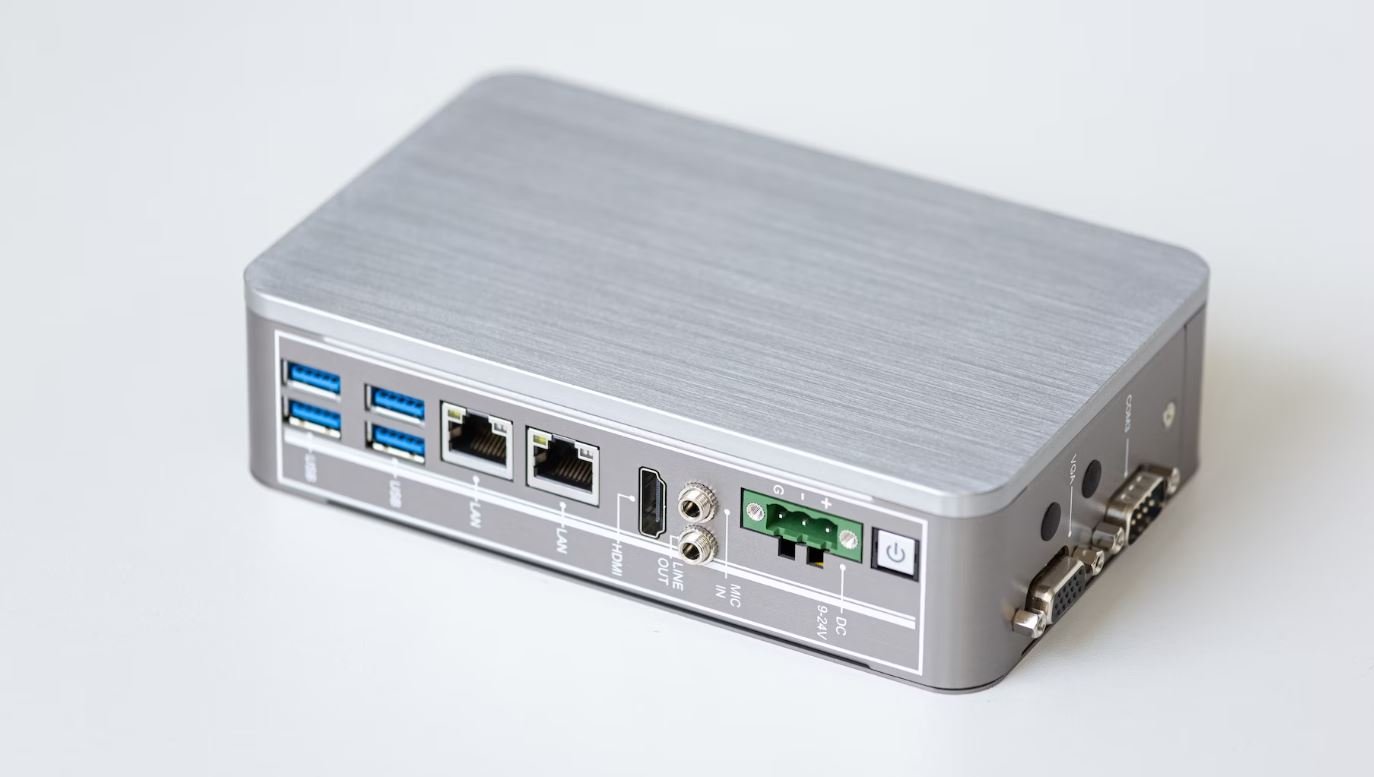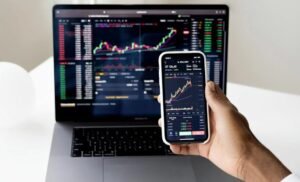Generative Art Medium
Generative art is becoming an increasingly popular medium that harnesses algorithms and computer code to create unique and dynamic artworks. This fusion of technology and artistic expression offers new opportunities for creativity and exploration. Whether you are a seasoned artist or simply curious about this emerging field, understanding generative art can open up a whole new realm of artistic possibilities.
Key Takeaways
- Generative art uses algorithms and computer code to create unique artworks.
- It offers new opportunities for artistic creativity and expression.
- Generative art is a fusion of technology and artistic exploration.
Generative art draws inspiration from a wide range of disciplines, including mathematics, biology, and computer science. This interdisciplinary approach allows artists to explore complex and organic patterns that are difficult to achieve through traditional artistic methods. By leveraging the power of algorithms, generative artists can create artworks that evolve over time, respond to user input, or simulate natural processes. *Generative art pushes the boundaries of traditional art forms by embracing randomness and algorithmic rules.
Unleashing Creativity with Code
Generative art often involves writing code, either from scratch or by modifying existing algorithms. Through the process of coding, artists can fine-tune parameters and experiment with different variables, leading to endless possibilities for artistic exploration. This blending of art and code allows for a level of precision and control that traditional art forms may not offer. *Generative artists become both programmers and creatives, merging analytical thinking with artistic vision.
Generative art can be created using various programming languages and platforms. Some popular ones include Processing, a programming language specifically designed for visual arts, and JavaScript, which allows for web-based interactive art experiences. These tools provide artists with a wide range of functions and libraries that simplify the creation of generative art. Thus, even beginners can embark on their generative art journey with little programming knowledge. *Generative art tools empower artists of all skill levels to explore the world of algorithmic creativity.
The Impact of Generative Art
The emergence of generative art has opened up exciting new possibilities in the art world. Its unique approach to artistic creation challenges traditional notions of authorship and introduces a greater element of viewer participation. Through interactive installations and generative algorithms, artists can create immersive experiences where the artwork evolves and adapts in real-time. This shift in dynamics between the artist, artwork, and viewer allows for a more engaging and dynamic art experience. *Generative art blurs the line between artist, artwork, and audience, fostering a collaborative and ever-changing creative ecosystem.
| Program | Description |
|---|---|
| Processing | A flexible software sketchbook and a language for learning how to code within the context of the visual arts. |
| JavaScript | A programming language commonly used for creating interactive and dynamic web content. |
One notable example of generative art is the famous artist duo Quayola and Sinigaglia, who combine data visualization with algorithms to create mesmerizing visual installations that are both awe-inspiring and thought-provoking. By using real-time data and mathematical equations, they create generative artworks that transform data into immersive visual experiences. *Generative art can transform complex data into captivating visual narratives that engage the audience on multiple levels.
Exploring Boundaries
Generative art challenges traditional notions of art creation and pushes the boundaries of what can be considered artistic expression. Through the use of algorithms, generative artists can create artworks that go beyond the limitations of human imagination. The combination of technology and artistic vision invites us to question the role of the artist, the relationship between humans and machines, and the very nature of creativity itself. *Generative art challenges our preconceptions about the boundaries of artistic expression and encourages us to reimagine what art can be.
| Advantages | Challenges |
|---|---|
| Endless creativity and possibilities | Requires programming skills |
| Interactive and dynamic experiences | Can be overwhelming with the abundance of options |
As technologically driven art continues to evolve, generative art stands at the forefront, combining computational power with artistic creation. Its ability to generate unique, evolving, and interactive experiences sets it apart from other artistic mediums. From explorations of mathematical beauty to immersive installations that respond to viewer input, generative art’s impact on the art world is only just beginning. *Generative art redefines the concept of artistic creation by marrying technology and creativity in unprecedented ways.

Common Misconceptions
Generative Art is just random and lacks intention
One common misconception about generative art is that it is merely the result of random processes without any underlying intention or meaning. However, generative art is a deliberate creative process that involves the use of algorithms and rules to generate art. The randomness is often controlled and guided by the artist’s choices and intentions.
- Generative art is created through algorithmic rules and deliberate choices.
- The randomness in generative art is often controlled and guided by the artist.
- Generative art can have deep meaning and intention, just like traditional art forms.
Generative Art is created without skill or artistic talent
Another misconception is that generative art is created without any skill or artistic talent. In reality, generative artists possess a unique set of skills that include programming, computational thinking, and visual design. They combine their technical knowledge with artistic sensibilities to create visually captivating and conceptually rich artworks.
- Generative artists need programming and computational skills to create their art.
- The artistic talent in generative art lies in the ability to conceptualize and transform algorithms into visually appealing outputs.
- Generative artists often experiment with different techniques and algorithms to achieve their desired results.
Generative Art has limited aesthetic variety
Some people might think that generative art has a limited aesthetic variety and that all generative artworks look similar. However, generative artists have a wide range of tools, techniques, and algorithms at their disposal, allowing them to create diverse and unique artworks. From fractal patterns to evolving landscapes, generative art can explore a multitude of styles and visual possibilities.
- The aesthetic variety in generative art is virtually limitless.
- Generative artists can create artworks inspired by natural phenomena, abstract forms, or even traditional art styles.
- Generative art can embrace both minimalistic and complex visual styles.
Generative Art is created solely by computers
Contrary to popular belief, generative art is not solely created by computers. While computers and algorithms play a vital role in the creation process, generative art is ultimately a collaboration between the artist’s creative vision and the capabilities of computational systems. Human input, intuition, and artistic sensibilities guide the programming and shape the artwork’s final outcome.
- Generative art is a collaboration between human artists and computer systems.
- The artist’s vision and intuition guide the creation and refinement of generative artworks.
- Generative art blurs the boundaries between human creativity and machine generativity.
Generative Art is easily reproducible and lacks uniqueness
It is often assumed that generative art is easily reproducible and lacks uniqueness since it is created through algorithms. However, while generative art can produce variations of the same concept or algorithm, each generated artwork is unique and one-of-a-kind. Artists can fine-tune parameters, introduce randomness, or use interactive elements to create different outcomes, ensuring that each artwork possesses its own distinctiveness.
- Generative art can create a multitude of variations and unique instances.
- Artists can introduce randomness or interactive elements to produce unexpected and distinctive results.
- The uniqueness of generative art lies in the infinite possibilities offered by the algorithms and the artist’s choices.

Traditional Art vs Generative Art
Generative art is a form of art created using algorithms, computational processes, and randomization. It differs from traditional art in that the artist acts as a designer or programmer, creating a set of rules or algorithms that define the artwork’s behavior and appearance. This table compares some key differences between traditional art and generative art:
| Traditional Art | Generative Art |
|---|---|
| Creation by hand | Creation through code |
| Fixed artwork | Dynamically evolving artwork |
| Subjective interpretation | Objective algorithmic rules |
| Human emotions expressed | Machine-like precision |
| Unique to each artist | Multiple artists can create similar works |
Generative Art Applications
Generative art finds applications in various fields beyond visual aesthetics. This table lists some domains where generative art plays a notable role:
| Domain | Generative Art Application |
|---|---|
| Architecture | Creating unique building designs |
| Music | Composing complex melodies |
| Data Visualization | Representing complex datasets |
| Fashion | Designing intricate patterns |
| Advertising | Generating eye-catching visuals |
Generative Art Examples
Generative art can take various forms and produce captivating visuals. Here are some incredible examples of generative art:
 |
 |
 |
 |
 |
 |
Generative Art Tools
To create generative art, artists utilize a variety of tools specifically designed for the purpose. Below are some popular tools for generative art creation:
| Tool | Description |
|---|---|
| Processing | A flexible software sketchbook for creative coding |
| P5.js | A JavaScript library for creative coding and visualization |
| OpenFrameworks | An open-source C++ toolkit for creative coding |
| Unity | A powerful game development engine with visual scripting |
Generative Art and Artificial Intelligence
Artificial intelligence (AI) technologies, such as machine learning, have been integrated into generative art processes to produce even more intricate and intelligent creations. Explore the relationship between generative art and AI in the table below:
| Generative Art | Artificial Intelligence |
|---|---|
| Assisted creative process | Enables machine-generated artistic insights |
| Human-designed algorithms | AI learns and generates novel algorithms |
| Limited by the artist’s knowledge | AI can discover unknown creative possibilities |
Generative Art and Emotional Response
Generative art has the ability to evoke emotions in viewers despite its inherent computational nature. Explore the emotions often associated with generative art:
| Joy | Serenity | Curiosity |
| Inspiration | Awe | Wonder |
Generative Art Challenges
While generative art offers exciting opportunities, artists may encounter challenges during the creative process. The following table highlights common challenges faced by generative artists:
| Challenge | Description |
|---|---|
| Overfitting | Artwork becoming too repetitive or predictable |
| Lack of control | Difficulty in achieving desired outcomes |
| Technical constraints | Hardware or software limitations affecting the artistic vision |
Generative Art and Critical Reception
Generative art has garnered attention in the art world, sparking conversations and debates. Opinions on generative art vary significantly:
| “A radical reimagining of artistic creation.” | “A departure from the artist’s traditional role.” |
| “Pushes the boundaries of human creativity.” | “Loses the essence of personal expression.” |
Generative Art Impact
Generative art has made a significant impact on both the artistic landscape and technological development:
| Expanded the definition of art | Enhanced computational creativity |
| Challenged the traditional artist-audience relationship | Pushed the frontiers of artificial intelligence |
Generative art represents a rapidly growing medium that blurs the lines between art, technology, and creativity. With its ability to produce awe-inspiring visuals, explore new artistic domains, and interact with emerging technologies, generative art continues to captivate audiences and reshape the way we perceive art.
Frequently Asked Questions
What is generative art?
Generative art refers to artistic creations that are generated using a set of predefined rules or algorithms. These rules can be programmed into a computer or created by the artist themselves, allowing for unique and complex visual outputs that are often unpredictable and constantly evolving.
What are the tools used in creating generative art?
The tools used in creating generative art can vary depending on the artist’s preference and expertise. However, common tools include programming languages such as Processing, JavaScript, or Python, as well as visual programming environments like Max/MSP or TouchDesigner. Some artists also use dedicated software or frameworks specifically designed for generative art creation.
How does generative art differ from traditional art?
Generative art differs from traditional art as it relies on algorithms and computational processes to generate the artwork. While traditional art often involves human expression and manual creation, generative art embraces algorithms and automation to create unique visuals that the artist may not have complete control over.
What are the benefits of generative art?
Generative art offers several benefits, including the ability to create intricate and complex visuals that would be difficult or time-consuming to create manually. It also allows for the exploration of new artistic possibilities and can be a source of inspiration for both artists and viewers. Additionally, generative art can encourage a different perspective on the creative process and challenge traditional notions of authorship and ownership.
Can anyone create generative art?
Yes, anyone can create generative art, regardless of their artistic background or programming skills. While a basic understanding of programming concepts may be helpful, there are plenty of beginner-friendly tools and resources available to get started with generative art. With practice and experimentation, anyone can create visually captivating generative artworks.
Is generative art considered a form of AI?
While generative art may rely on algorithms and computational processes, it is not necessarily considered a form of artificial intelligence (AI). AI typically refers to systems that can perform tasks that require human intelligence, such as problem-solving or pattern recognition. Generative art, on the other hand, is more focused on the visual output and creative expression rather than mimicking human intelligence.
Are there any copyright concerns with generative art?
Copyright concerns can arise in generative art, especially when using existing resources or incorporating copyrighted material. Artists need to understand the legal implications of using external data or algorithms and ensure they have the necessary rights or permissions. However, generative art itself is often seen as an exploration of new artistic possibilities and can challenge traditional notions of copyright and ownership.
Can generative art be sold or monetized?
Yes, generative art can be sold or monetized. Artists can create digital prints or physical artworks based on their generative creations and sell them through online platforms or galleries. Additionally, artists can explore other monetization avenues such as licensing their generative algorithms or creating interactive generative installations for public or private spaces.
What are some famous examples of generative art?
There are several famous examples of generative art, including “Autumn” by Kenneth C. Knowlton, “AARON” by Harold Cohen, and “Coded Couture” by Ivyrevel. Additionally, the work of artists like John Maeda, Casey Reas, and Marius Watz has significantly contributed to the field of generative art.
Where can I learn more about generative art?
There are numerous resources available to learn more about generative art. Online platforms like Codecademy and Khan Academy offer courses on programming concepts related to generative art. Additionally, books such as “Generative Design” by Hartmut Bohnacker, Benedikt Gross, Julia Laub, and Claudius Lazzeroni provide in-depth insights into generative art techniques and theories.




